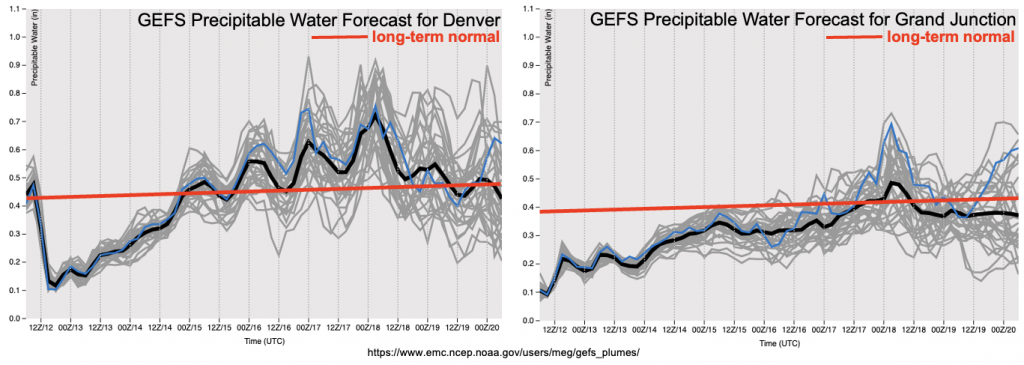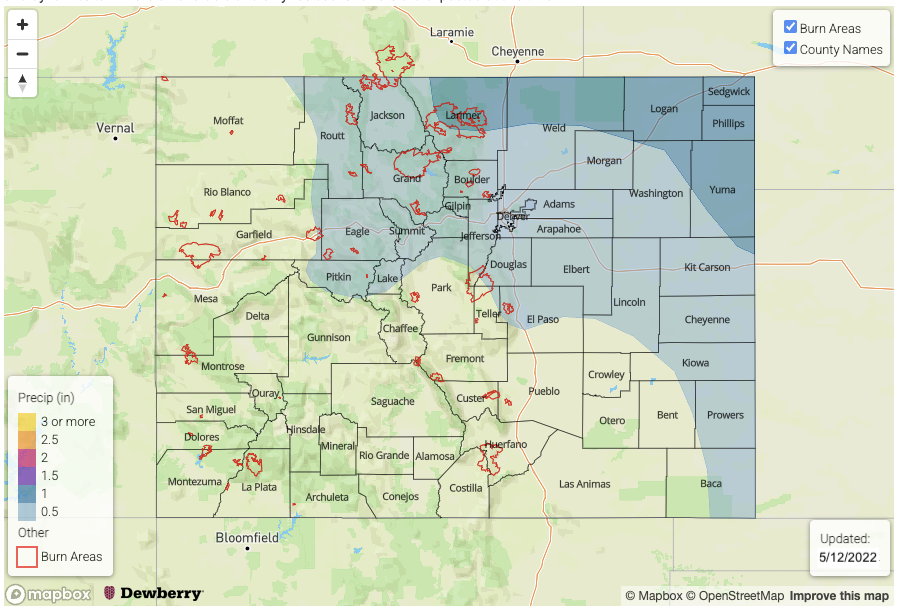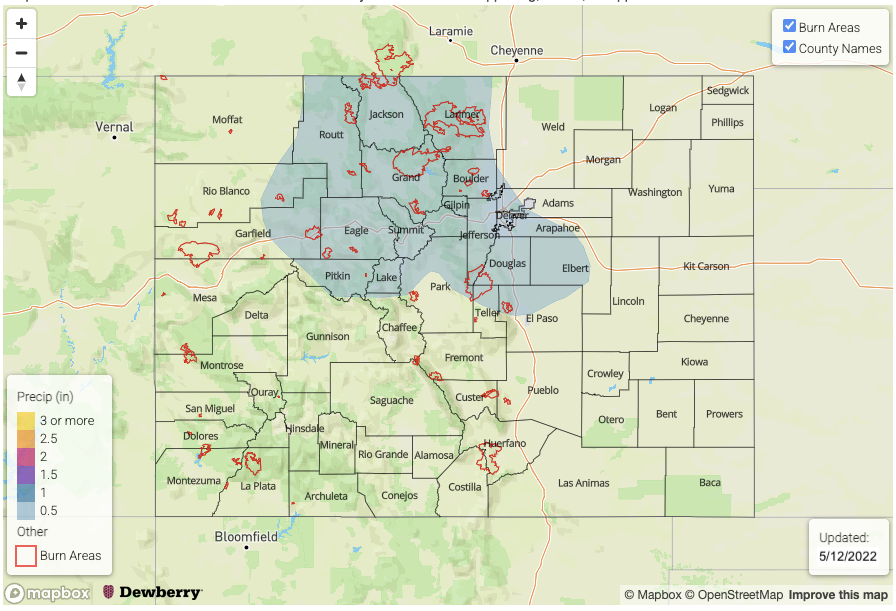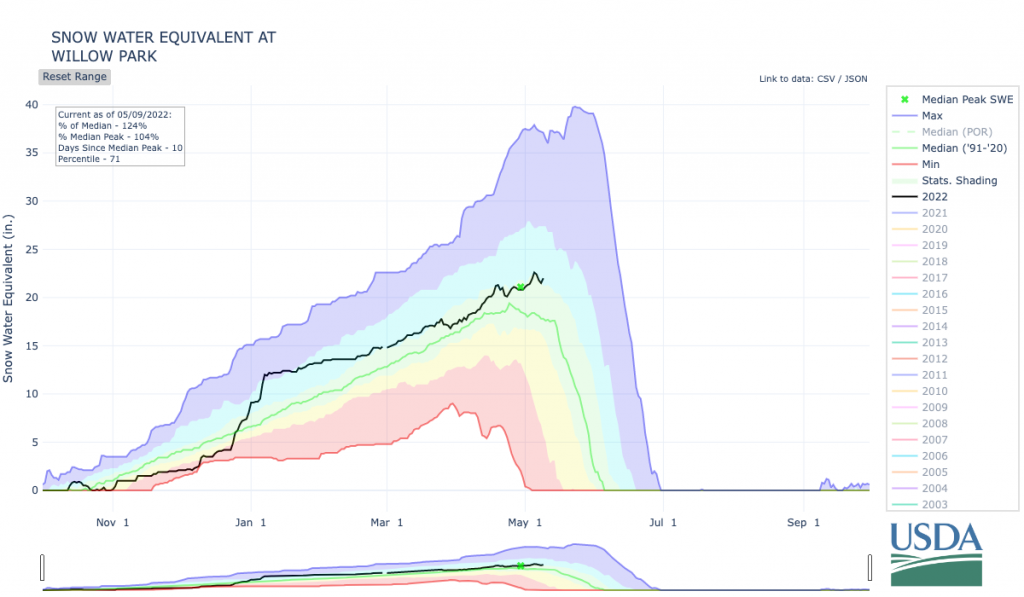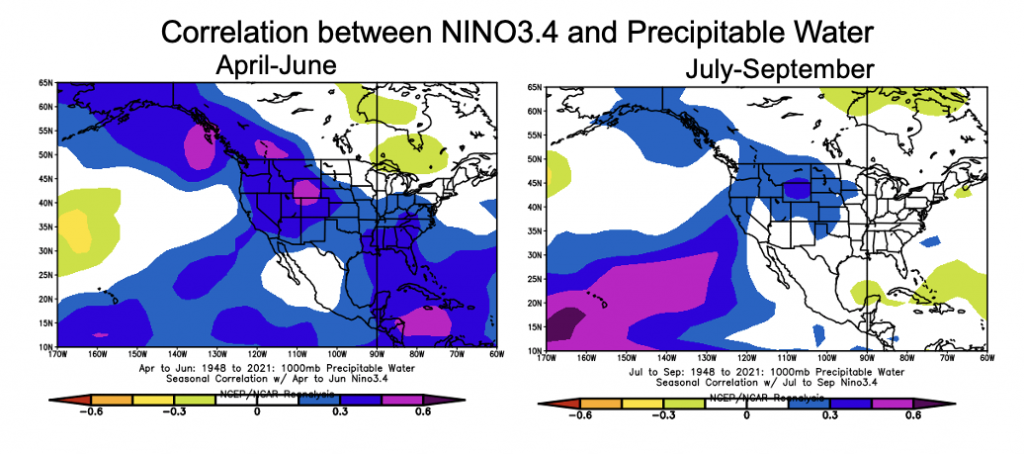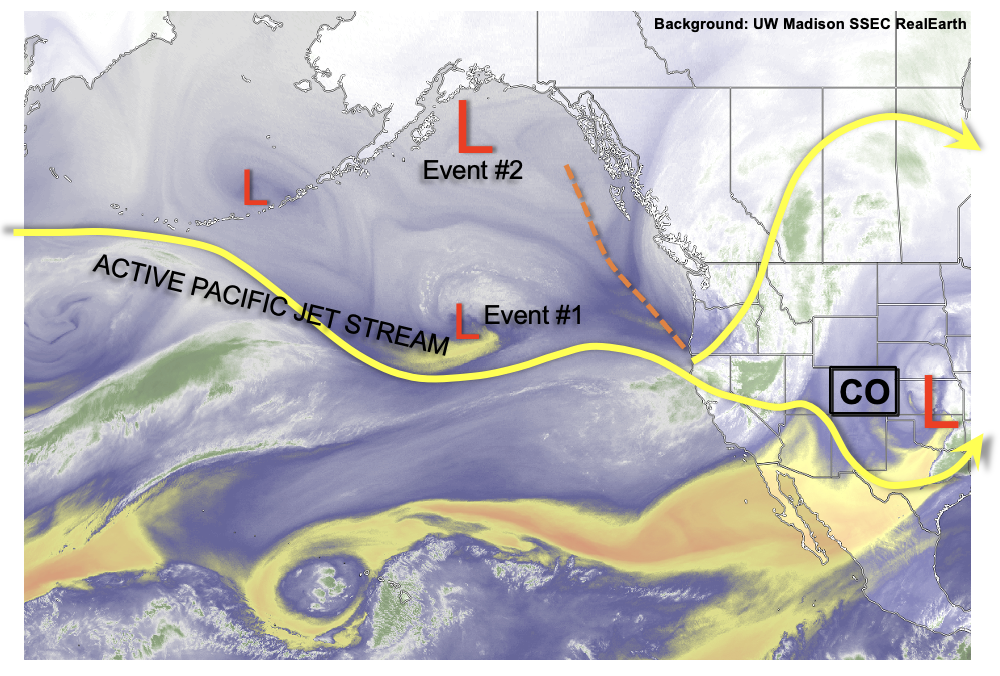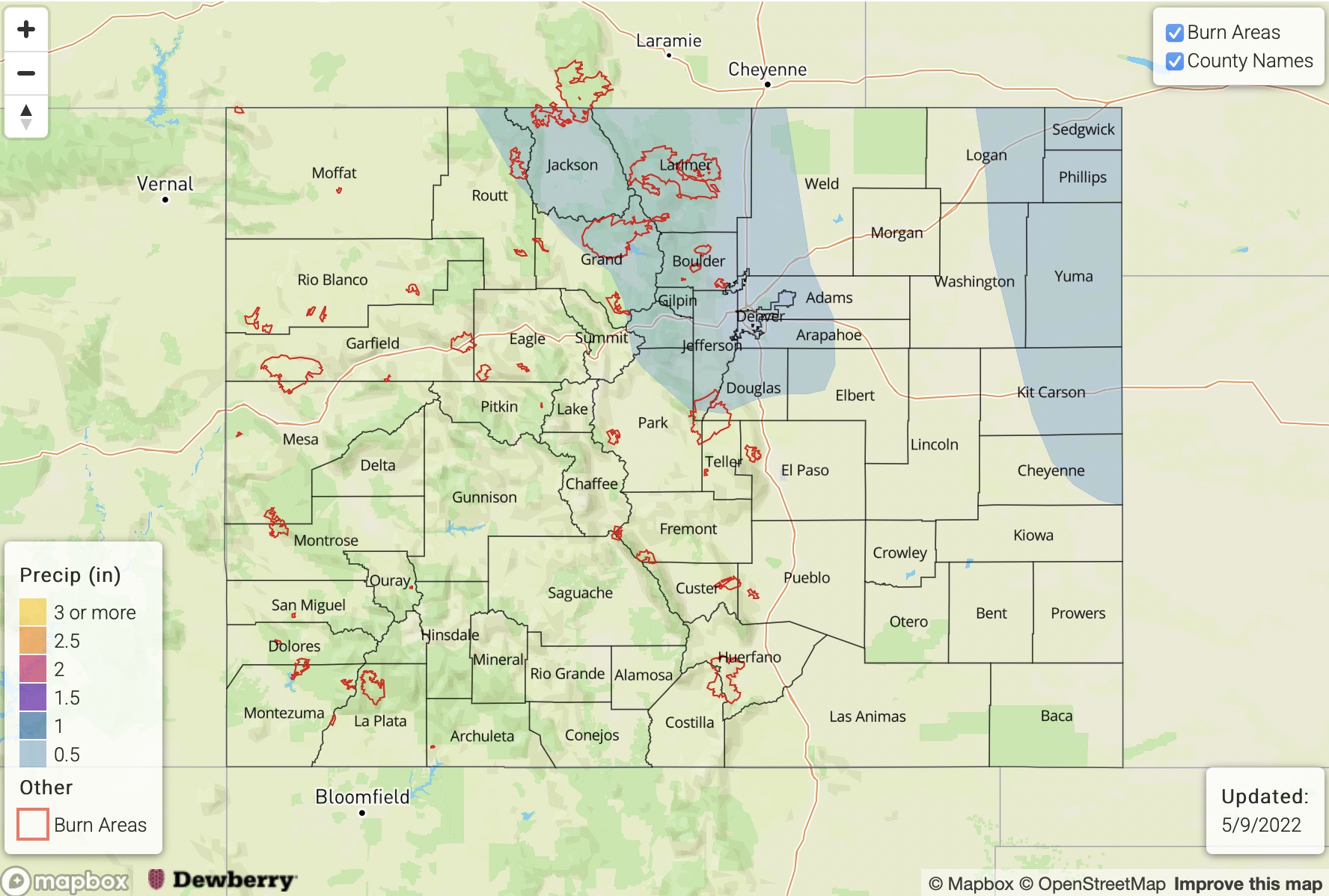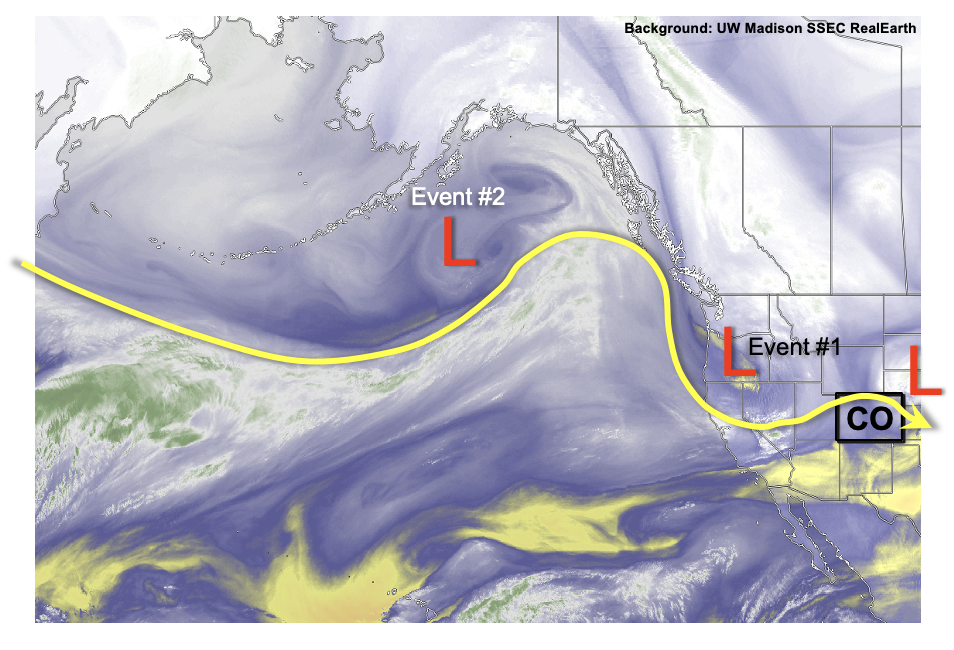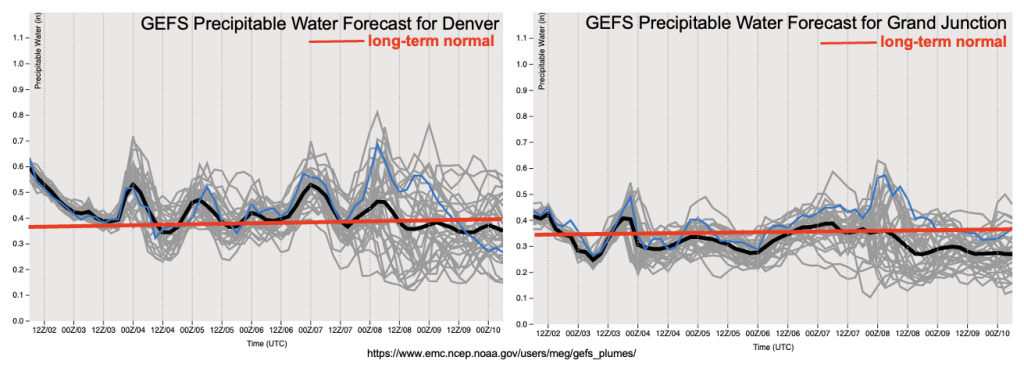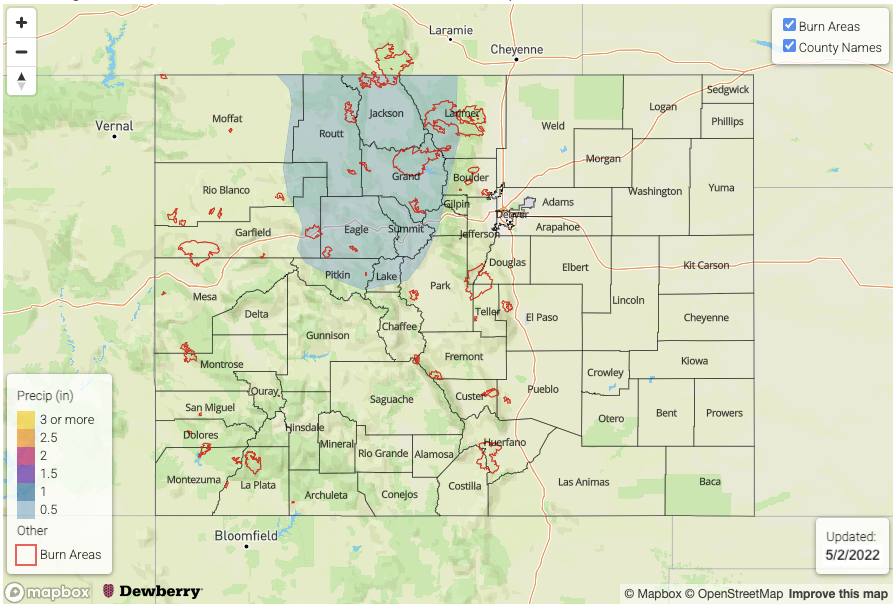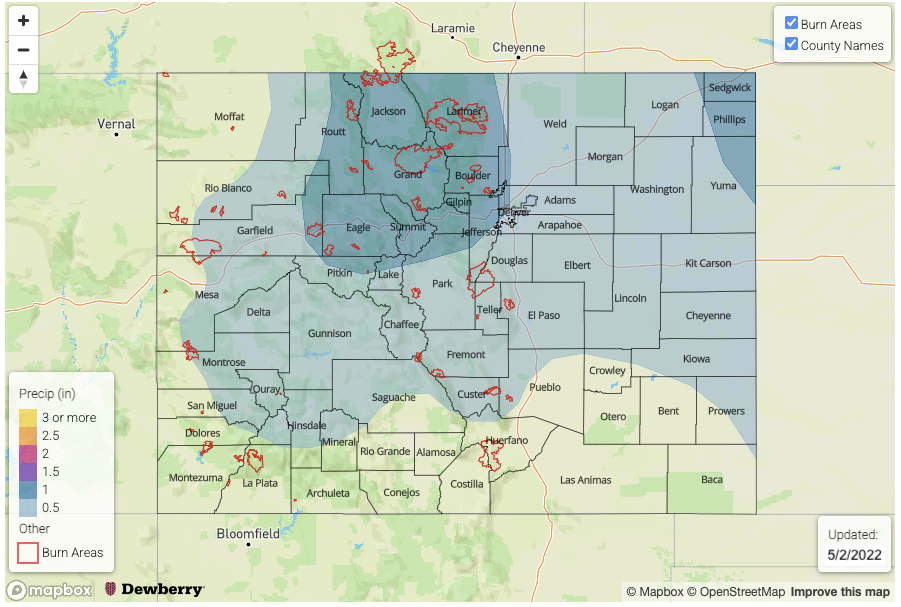Issue Date: Thursday, May 12th, 2022
Issue Time: 3PM MDT
Valid Dates: 5/13-5/27
A look at this afternoon’s water vapor image across western North America and the eastern Pacific Ocean shows quite the soup of atmospheric ingredients. In fact, this active, high-amplitude pattern has been around for the better part of May. But for us in Colorado, it has been mainly a tease given that moisture levels have remained below normal. Instead, we have continued to see day after day of windy, mainly dry conditions supportive of Red Flag Warnings.
Fortunately, there are finally encouraging signs that precipitation will make a return to Colorado. That is the good news. The bad news is that we will still have to wait a bit longer – until early next week. Until then a temporary upper-level ridge will setup across the western United States that will provide seasonably warm weather through Saturday. By Sunday, the pair of disturbances noted over the eastern Pacific Ocean (Event #1) will quickly trek eastward, embedded within the larger upper-level trough expected to hang on over western Canada. Interestingly, note the southern disturbance contributing to Event #1 will be of subtropical origin.
As can be seen with the forecasted PW plumes from the GEFS, the features comprising Event #1 will cause a notable spike in moisture with well above normal PW expected at Denver and even Grand Junction, though to a less degree. In addition dynamical support in the form of a shortwave will provide enough ingredients to warrant a 3-day Elevated flood threat mainly for the Northeast Plains. The primary threat, from the flooding perspective, will be for 1-3 hour flash flooding as afternoon and evening thunderstorms are expected to have plenty of moisture to work with. In addition, a severe weather threat will likely accompany these storms, in consistency with mid-May climatology.
In concert with the increase in moisture will be a continuation of warm temperatures through the middle of next week. This will trigger the first major snowmelt for the Northern Mountains. With a large snowpack still in place across many ranges, we do expect some minor flooding concerns. The primary region of concern right now is the Cache La Poudre basin, which has begun its seasonal spike (see below). Also of concern are parts of the Elk Mountains, Medicine Bow and Laramie Mountains as well where smaller creeks and streams will probably see at least minor bank-side flooding. An Elevated flood threat has been highlighted for snowmelt next Monday through Wednesday.
Thereafter, current guidance suggests cooler temperatures and precipitation chances will persist through at least next weekend with another precipitation event coming in (Event #2). At this time, this event looks to provide mainly higher elevation rain and snow potential with flooding not anticipated. However, over the far eastern Plains, enough instability could creep back in from KS/OK to trigger a few storms. At this time, there is No Apparent Flood Threat.
The identified precipitation events are described in more detail below.
Event #1: Sunday – Thursday (May 15 – May 19)
Showers and Storms Expected Daily For The Eastern Plains; Elevated Flood Threat
Isolated showers and storms cannot be ruled out on Sunday, but limited moisture will prevent any major rainfall. By Monday and Tuesday, when the dynamics and moisture begin to affect the state in tandem, expect a round of afternoon and evening showers and storms both days over the Northeast Plains, but also possibly extending to the Southeast Plains, and westward to the Palmer Ridge and Urban Corridor. Max 1-hour rainfall up to 2.0 inches looks attainable, along with the threat of large hail. By Wednesday, activity is expected to move southeast into the Southeast Plains and be more isolated in nature, though enough moisture still warrants an Elevated threat. By Thursday, moisture decreases and dynamics turn more unfavorable and only residual showers are expected at this time.
Event #2: Friday – Saturday (May 20 – May 21)
Rain and Higher Elevation Snow Possible Over Northern Mountains; Rain Chances Over Plains Uncertain So No Apparent Flood Threat
There is more uncertainty with this event, but guidance is reasonably confident that a disturbance will provide widespread rain and snow over the higher terrain of the Front Range, Central Mountains and Northern Mountains. Precipitation amounts over 0.5 inches look possible with this event, though it will likely be too cold for a flood threat. Along the KS/OK border, it is possible that enough moisture will move back into the state to spark some showers and storms. But there are currently low odds of this happening, hence, no apparent flood threat.


